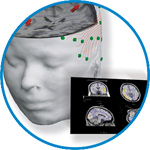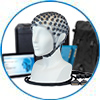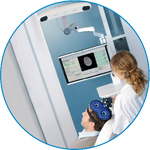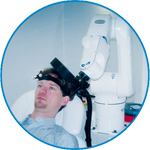- Home
- About ANT
-
Products

asa
asa is a highly flexible EEG/ERP and MEG analysis package with a variety of source reconstruction, signal analysis and MRI processing features.
.jpg)
eego mylab
The new frontier in multimodal brain research. With up to 16 kHz sampling rate, 256 EEG channels and unique software features, eego mylab gives you an unprecedented in-depth understanding of the human brain.

eego sports
eego sports offers complete freedom to collect high-density EEG data, bipolar EMG signals, and a variety of physiological sensor data, wherever and whenever required, with publish quality data in less than 15 minutes!

waveguard net
The waveguard net sets a new standard for research applications requiring high-density EEG data acquisition with quick preparation time, high flexibility, and subject comfort.

visor2
Our new and upgraded visor2 solutions integrate all the latest technologies for navigated rTMS, dual-coil navigation support, EEG-TMS recordings and pre-surgical evaluation for the highest quality in research and clinical procedures.

powerMAG ANT
The PowerMAG ANT 100 rTMS stimulator is designed for the specific needs of high-end TMS applications. Powerful high-frequency TMS as well as high precise single pulse and repetitive pulse protocols are combined in one single device.

xensor
xensor offers the solution for digitization of 3D electrode positions. xensor takes care of the whole procedure; it records, visualizes and stores positions acquired with a dedicated digitizer.

waveguard original
waveguard original is the cap solution for EEG measurements compatible with fMRI, MEG and TMS system. Use of active shielding guarantees performance in even the most demanding environments.

waveguard connect
waveguard connect EEG caps are a perfect match for hospitals and institutes aiming at reliable EEG, maximum uptime and great patient comfort! For optimal signal quality, the electrodes are made of pure, solid tin.

waveguard touch
waveguard touch is a dry electrode EEG cap. The unique Ag/AgCl coated soft polymer electrodes provide stable, research-grade EEG signals while maintaining subject comfort. The combination of these innovative dry electrodes and the industry-leading waveguard cap makes waveguard touch the best solution for dry EEG.

smartmove
smartmove allows planning of a complete TMS session ahead by defining stimulation sites based on anatomical MRI information and functional information like fMRI, PET or EEG/MEG.
Stay - References
- Support
- Events
- News
- Contact Us
You are here
Brain mechanisms for processing co-speech gesture: A cross-language study of spatial demonstratives
Brain mechanisms for processing co-speech gesture: A cross-language study of spatial demonstratives
This electrophysiological study investigated the relationship between language and nonverbal socio-spatial context for demonstrative use in speech communication. Adult participants from an English language group and a Japanese language group were asked to make congruency judgment for simultaneous presentation of an audio demonstrative phrase in their native language and a picture that included two human figures as speaker and hearer, as well as a referent object in different spatial arrangements. The demonstratives (“this” and “that” in English, and “ko,” “so,” and “a” in Japanese) were varied for the visual scenes to produce expected and unexpected combinations to refer to an object based on its relative spatial distances to the speaker and hearer. Half of the trials included an accompanying pointing gesture in the picture, and the other half did not. Behavioral data showed robust congruency effects with longer reaction time for the incongruent trials in both subject groups irrespective of the presence or absence of the pointing gesture. Both subject groups also showed a significant N400-like congruency effect in the event-related potential responses for the gesture trials, a finding predicted from previous work (Stevens & Zhang, 2013). In the no-gesture trials, the English data alone showed a P600 congruency effect preceded by a negative deflection. These results provide evidence for shared brain mechanisms for processing demonstrative expression congruency, as well as language-specific neural sensitivity to encoding the co-expressivity of gesture and speech.

 Read more
Read more.jpg)




